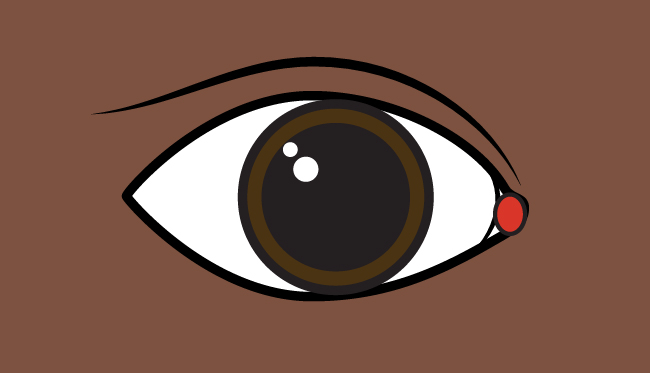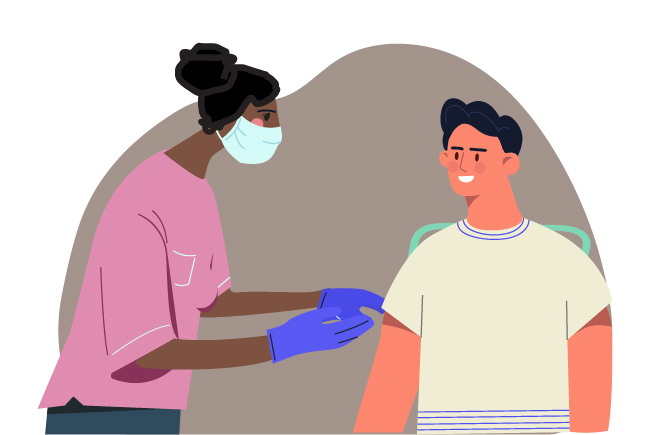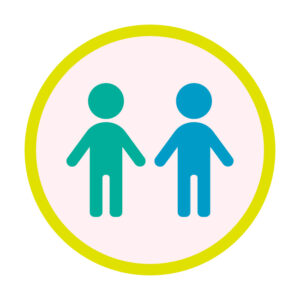Why is juvenile diabetes a problem for vision and eye health?
It is important for youth with diabetes and their families to know that vision problems are common with diabetes. Vision problems may be avoided or delayed by keeping blood glucose (sugar) levels in range and getting dilated eye exams each year or as recommended by your eye doctor (an optometrist or ophthalmologist).
Vision problems due to diabetes-related eye disease may develop after living with diabetes for several years but may occur earlier if blood glucose is not kept in range. These vision problems can include trouble reading, seeing faces across the room, seeing at night, and even blindness.
Fact Sheets to Download and Print:
Diabetes Resources at Prevent Blindness
These resources are designed to support individuals living with diabetes and help them gain access to eye care that they require to maintain healthy vision.
What is diabetic eye disease?
1 in 2 Youth with Diabetes
may develop diabetic retinopathy 12+ years after diagnosis.
Also known as diabetes-related eye disease, these are a group of eye problems that can affect people with diabetes, including:
Diabetic retinopathy (diabetes-related retinopathy), when small blood vessels in the eye are damaged by high blood glucose over time. These blood vessels can leak or bleed in the retina.
The retina is in the back of the eye. It acts like the film in a camera to help us see.
Diabetic macular edema (diabetes-related macular edema), swelling that can occur with diabetes-related retinopathy. It occurs when the small blood vessels in the center of the retina, called the macula, start to leak. This may cause the retina to swell and can lead to vision loss.
What are the symptoms of diabetic retinopathy?
It is important to remember that a child in your care with diabetes may not experience vision symptoms in the early stages of eye disease. This is why it is important to see an eye doctor regularly. Here are some symptoms that may occur with diabetes-related retinopathy:

Sudden increase in eye floaters (spots and/or dark wavy lines)

Sudden missing or dark areas in your vision

Difficulty seeing at night

Blurred vision

Flashes of lights

Colors appear faded
Contact your eye doctor right away if you or your child have any of these symptoms. Early detection and treatment can reduce the risk of vision problems.
What is a dilated eye exam?
A dilated eye exam uses eye drops to dilate (widen) the opening in the front of the eye called the pupil.
Dilation allows the eye doctor to see into the back of the eye where the retina is located. This is an important step during an eye exam for youth living with diabetes. The eye drops do not cause pain but may sting for a minute or two after being put in the eye. The side effects of the eye drops may include blurry vision, especially up close, and sensitivity to light. The side effects generally last a few hours. If getting a dilated eye exam is not possible, an eye screening using a special camera that takes pictures of the retina without dilation can be done instead.
5 ways to prevent vision loss from juvenile diabetes
While there is no cure for diabetes, it is possible to help prevent or delay vision and other health issues associated with this condition. Here are 5 ways to help prevent vision loss from diabetes:

Getting dilated eye exams: Dilated eye exams are important for both types of diabetes. If a child in your care has a diabetes-related eye disease, treatment may help or prevent their vision from getting worse.

Focusing on preventive care: It is key a child in your care has regular check-ups with a primary care physician, monitors their blood glucose levels, and follows the diabetes-treatment program as prescribed. Talk to your child’s care team (pediatric endocrinologist, pediatrician, diabetes educator, nutritionist, or registered dietitian) if you have any questions or concerns.

Staying active: Encourage a child in your care to get or stay active in something they enjoy such as dancing, bike riding, or playing outside. Support them by joining in the physical activity along with them.

Eating healthy foods: Offer foods low in fat and sugar by eating fresh fruits, vegetables, lean proteins, and whole grains. Avoid processed foods, juices, and soda.

Avoiding developing habits that create complications: Smoking increases the risk of complications due to diabetes. Encourage a child in your care to not smoke or help them to stop, if needed.
This resource was made possible by funding from:





